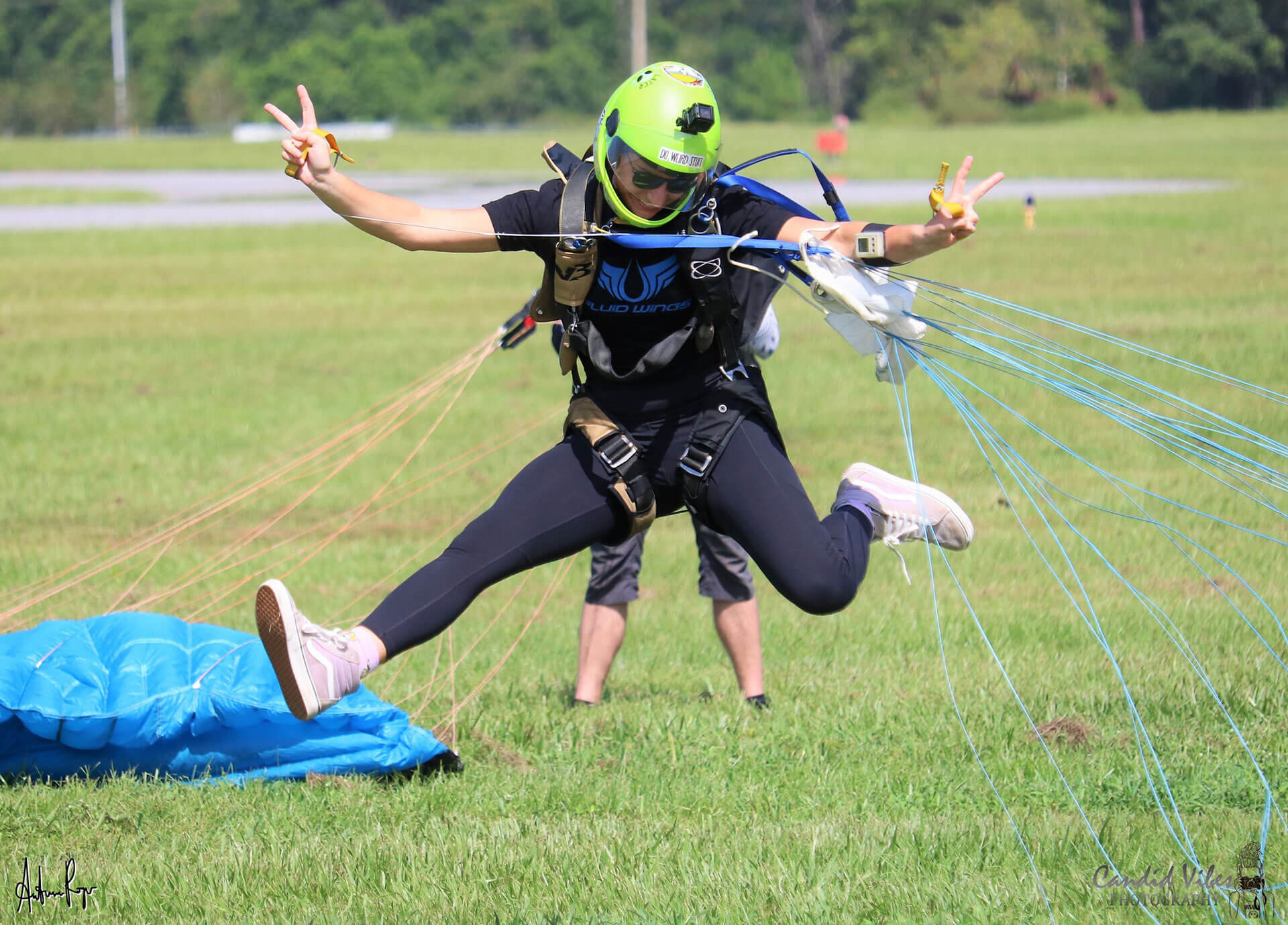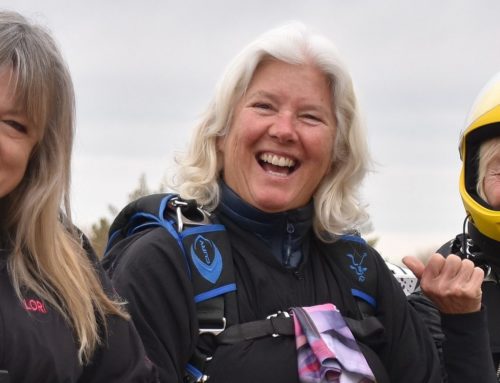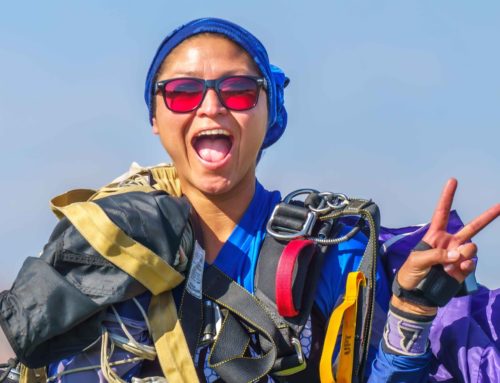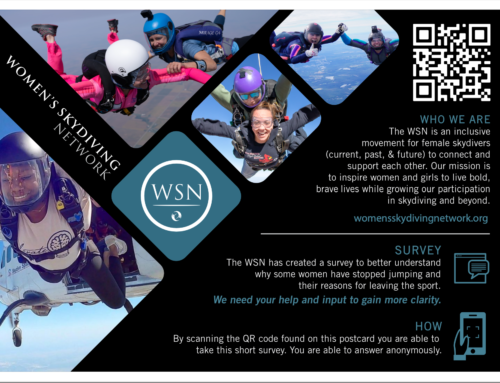How to get into skydiving | Your first tandem and beyond
The concept of flight has been something humans have dreamt about for hundreds of years, if not millennia; the sport of skydiving as we know it had its start over a hundred years ago. Since then, hundreds of thousands of people have become skydivers, but only a small percentage of them are women.
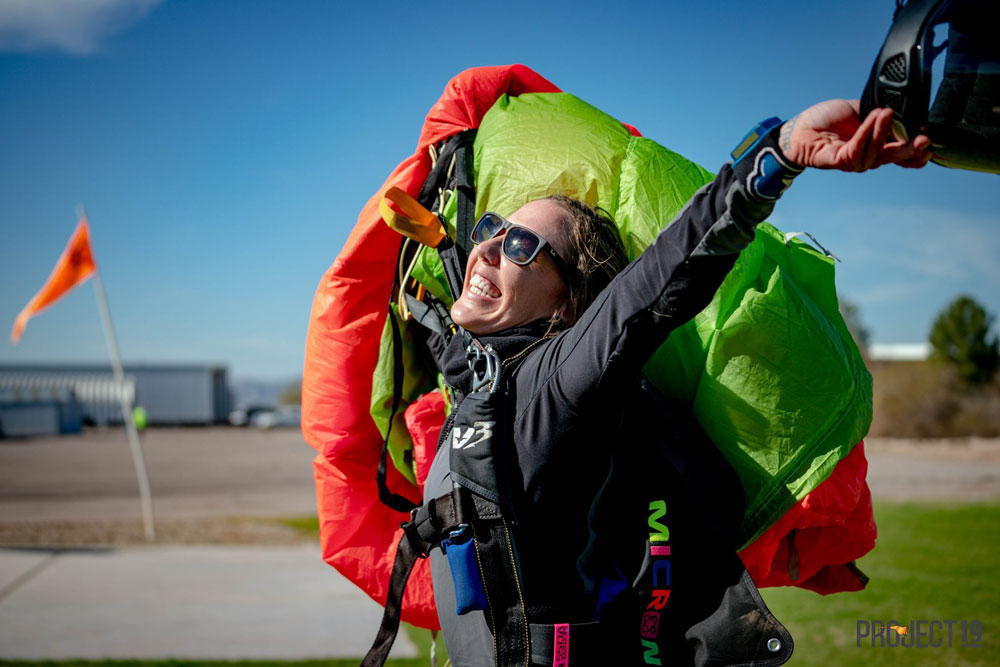
Photo By: D Squared
Our goal at the WSN is to increase women’s representation in the sport. This article is meant to serve as a guide to assist you in joining the ranks of the women who have come before you. The direction you take your skydiving career is boundless. The WSN is here to support whichever path you choose. Whether you just want to face your fears and have a new hobby, teach and guide others, or even get competitive and attempt setting world records, we are here for you!
The most popular, not to mention safest and cheapest way to experience skydiving for the first time is making a tandem skydive. A tandem skydive is where you and your instructor jump harnessed together using a parachute system designed to carry two people. This is an excellent introduction to the sport and a great way to discover if skydiving is for you.
Your first step in becoming a skydiver is to determine where you would like to jump. We call skydiving facilities Drop Zones; the industry has shortened the phrase to “DZ.” There are over 300 DZs worldwide, so shop around when looking for the right place for you. There are a few resources available online to assist you in finding a DZ, such as USPA.org and skydivingdzs.com.
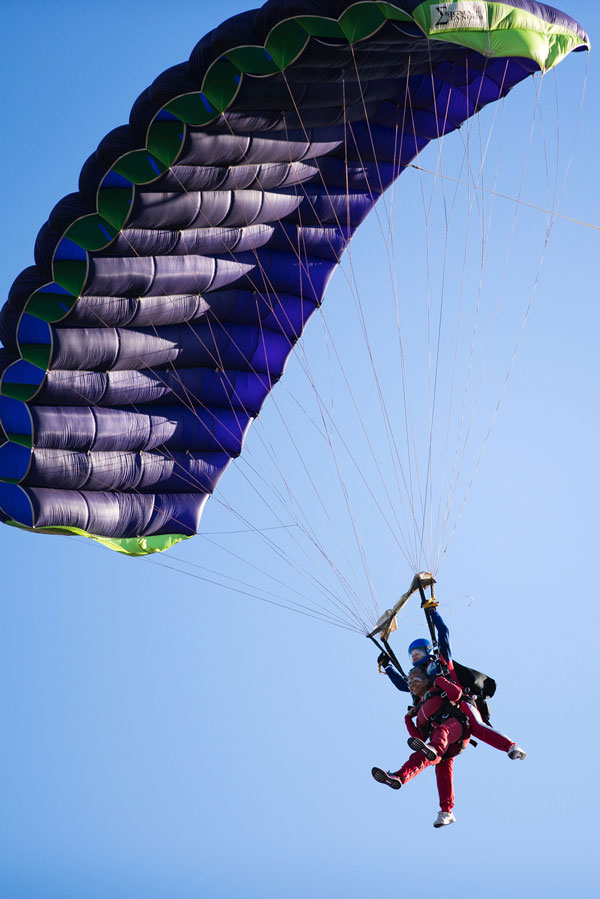
Photo By: Red Bull
Have you already made a tandem and now you’re ready to jump headlong into the sport? Or perhaps you want to skip making a tandem altogether and get started training to jump your own personal parachute system… then how do you decide what DZ to call home? After reading this article you should have no trouble coming up with a list of criteria that matter to you.
Proximity could be a major factor in deciding where you enroll in a program. Maintaining currency is key to progressing safely, so you’ll want to get to the DZ on a regular basis. While you are on student status, the United States Parachute Association (USPA), which most DZs in the US are affiliated with, requires that you jump at least once in a 30-day window to be considered current. However, jumping more often is highly recommended. You are considered off student status once you have completed at least 25 jumps and meet the requirements for your A-license. Then, your currency window expands to 60 days.
Does the DZ offer your preferred method for learning? The most common program used to teach you to skydive is called the Accelerated Free Fall program, or AFF for short. The AFF program is a 7 level program where you advance through the different levels to gain the skills needed to safely make your first solo skydive. Most DZs offer some form of the AFF program. You might find that the school is organized as a straight 7-level curriculum or that it includes tandem training jumps and/or additional coached jumps. Just be aware, some schools require you to make a tandem first, while others offer tandem progression programs. Some smaller DZs still offer Static Line or Instructor Assisted Deployment (IAD) training where they will extract your parachute for you as you jump from the plane.
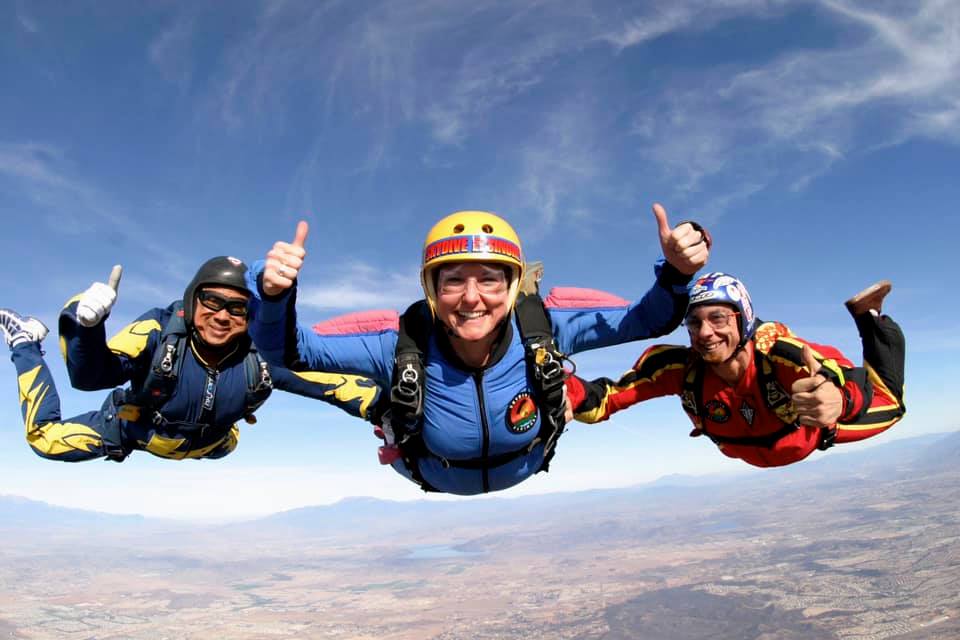
Photo By: Skydive Elsinore
Another thing worth mentioning is an A-license program. More and more DZs are offering these “one-stop shops” which not only include the training needed to take you from your first jump through your AFF graduation but will also include the additional jumps and training needed to meet the A-license requirements. Some of these packages even include gear rental, packing classes, and the fees sent to the USPA for your membership and A-license.
Other good questions to explore while making your decision are:
- When is the First Jump Course (the ground school portion of AFF) offered?
- Is the DZ open every day of the week? Are instructors available every day?
- Does the DZ own and operate their own aircraft or lease aircraft from another operator?
- What range of student weights does their equipment accommodate?
- Do they have rental equipment available after you complete your course?
- Is there a gear store on-site or do they work with an affiliated gear store?
- Do they have new and used equipment for sale? Is their website professional and up to date?
- Are you able to reach anyone on the phone?
- Were they excited to answer your questions, or at least knowledgeable and friendly?
Wait! What about equipment? Most schools will furnish you with absolutely everything you need to get started and will continue to do so while you are a student. In light of the pandemic, you might want to purchase your own pair of goggles before you make your first jump. The most common pieces of equipment purchased after graduating AFF is a helmet, an altimeter, and in some cases a jumpsuit. It will be tempting to rush to purchase more equipment, but it’s often recommended that you wait until you have more experience under your belt. Rental parachute systems will give you an opportunity to try different pieces of equipment to help you determine the right fit for you.
As you can see, there is a lot of information that could go into influencing your decision. Take your time, make a list of pros and cons, or don’t, it’s totally up to you! Just remember, skydiving is fun and everyone’s journey is as unique as their fingerprint… sure everyone has swirls and whorls, ridges, and valleys, but ultimately yours are yours and no one else’s.
